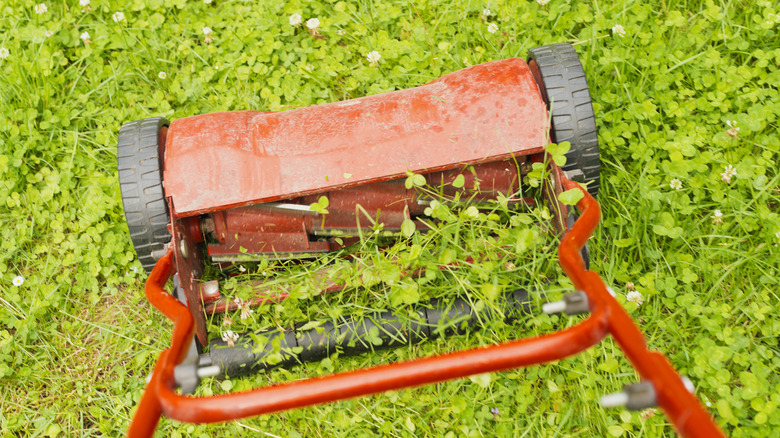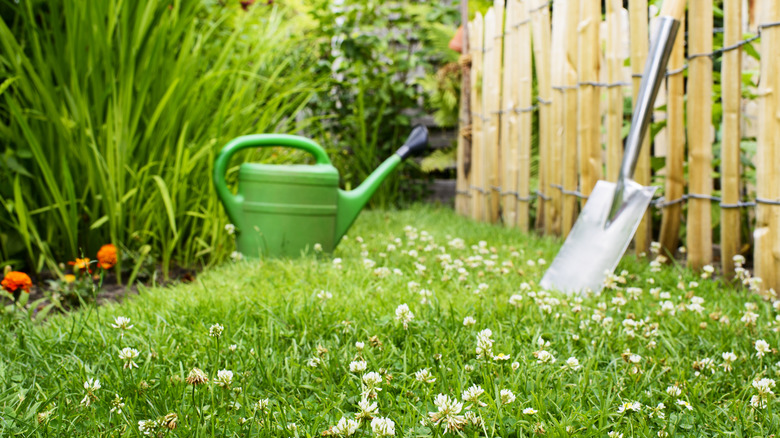How Often Will You Have To Mow A Clover Lawn?
A clover lawn is a clever twist on the traditional grassy carpet, swapping out the high-maintenance grass for charming clover patches. Clover lawns bring a pop of whimsical green dotted with delightful little flowers, creating a both a natural and relaxed vibe. Why opt for a clover lawn over a standard grass type? First, clover lawns do not need the constant attention that many other types of grasses require. Additionally, it's drought-tolerant, and won't overreact if you forget to water it. At the same time, it rarely demands pesticides or fertilizers for maintenance while also encouraging more pollinators in your yard as bees are drawn to its blossoms.
Clover is a nitrogen-fixing powerhouse, basically gifting your soil with nutrients, meaning you can toss that pricey fertilizer out the window. And the best part? You get to kick back and enjoy your clover haven without battling a stubborn sea of grass or weekly mowings. You only need to mow a clover lawn every four to six weeks to maintain a height of around three to four inches. This frequency prevents clover flowers from going to seed and encourages lush growth. A less frequent mowing schedule fosters clover's natural resilience and growth pattern.
Tips for maintaining a clover lawn
Maintaining a lush clover lawn begins with proper watering and sunlight. Clover is resilient and adaptable, so water deeply, but infrequently, to encourage deep root growth. Aim for about one inch of water per week, adjusting based on your local climate conditions. As for sunlight, clover thrives in partial to full sun, but it can tolerate some shade. If your lawn receives limited sunlight, ensure it gets at least four to six hours of sunlight per day for optimal growth and health.
Fertilizing a clover lawn requires a delicate touch. Avoid high-nitrogen fertilizers that could lead to excessive growth and reduce clover's effectiveness as a nitrogen fixer. When it comes to weed control, the dense growth of clover leaves little room for weeds. However, occasional hand-pulling of weeds that manage to sprout may be necessary. Additionally, you may need to use a selective herbicide to maintain a pristine appearance. Always choose herbicides that won't harm the clover itself.
While clover lawns offer numerous benefits, there are a few drawbacks to consider. One key concern is foot traffic. Clover is less tolerant of heavy foot traffic compared to traditional grass. It can recover from light use, but constant trampling may lead to bare patches. If your lawn experiences frequent activity, consider using stepping stones or pathways to minimize direct foot traffic on the clover. Additionally, some people may be allergic to clover pollen, so be mindful of potential sensitivities.

